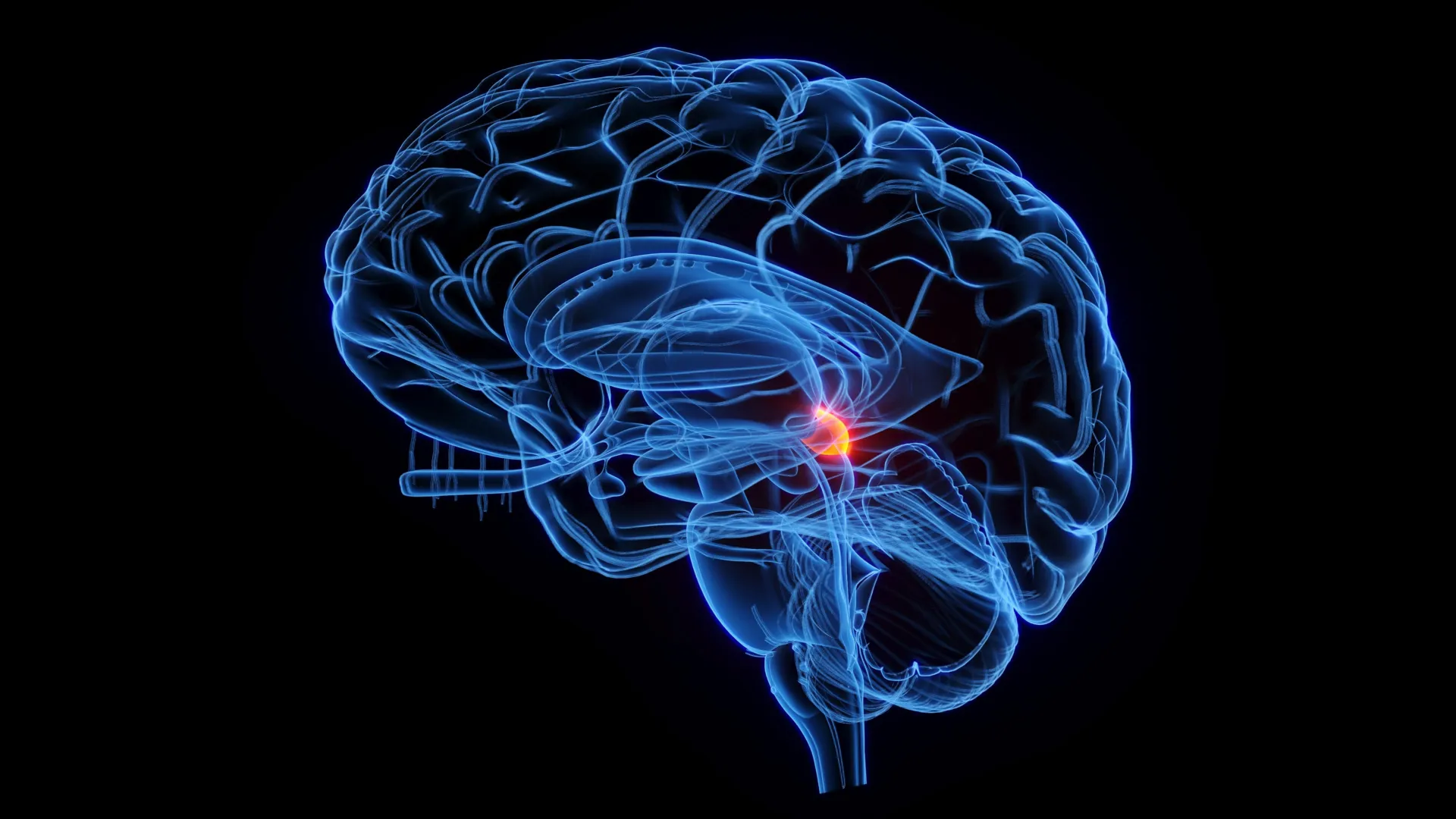Science
Ancient Brain Structure Reveals New Insights into Vision Processing

A groundbreaking study has revealed that the superior colliculus, an ancient part of the brain, plays a crucial role in visual processing. Researchers from the Universidad Miguel Hernández de Elche have shown that this primitive brain region can independently interpret visual information, challenging long-standing beliefs that such complex computations reside solely in the cortex.
The study, published in the journal PLOS Biology, highlights how ancient neural circuits significantly influence attention and perception. This finding suggests that our ability to process visual stimuli is deeply rooted in evolutionary history, dating back over 500 million years.
Ancient Neural Mechanisms at Work
Traditionally, the visual cortex has been viewed as the primary area responsible for interpreting visual data. However, the new research indicates that the superior colliculus, an evolutionarily older structure, contains sophisticated neural networks capable of performing essential visual tasks. These tasks include distinguishing objects from their backgrounds and determining which visual cues are most relevant in any given situation.
The study’s lead researcher, Andreas Kardamakis, who heads the Neural Circuits in Vision for Action Laboratory at the Institute for Neurosciences, a joint center of the Spanish National Research Council (CSIC) and the Universidad Miguel Hernández (UMH), explains, “For decades it was thought that these computations were exclusive to the visual cortex, but we have shown that the superior colliculus can also perform them autonomously.”
The superior colliculus functions akin to a radar system, processing direct signals from the retina before they reach the cortex. It quickly identifies which aspects of the visual scene demand immediate attention. When an object moves or a sudden change occurs, this ancient structure is the first to react, guiding our gaze towards the new stimulus.
Innovative Research Techniques
To explore these mechanisms, researchers employed advanced techniques such as patterned optogenetics and electrophysiology. By activating specific retinal pathways and observing responses in mouse brain slices, they discovered that the superior colliculus can suppress a central visual signal when the surrounding area becomes active. This suppression is a hallmark of center-surround processing, a vital aspect of visual perception.
Co-first author Kuisong Song notes, “We have seen that the superior colliculus not only transmits visual information but also actively processes and filters it.” This ability to prioritize visual information is embedded in the oldest subcortical circuits of the brain.
The findings indicate that mechanisms governing attention are foundational to brain architecture, predating the evolution of more advanced cortical areas. This challenges the traditional view that complex visual processing occurs only in higher brain regions.
Understanding how these ancestral structures contribute to visual attention also sheds light on various cognitive disorders. Kardamakis mentions that conditions such as attention deficit disorders and sensory hypersensitivity may stem from imbalances between cortical communication and these critical circuits.
The research team is now expanding their studies to live animal models to further investigate how the superior colliculus influences attention and manages distractions during goal-directed behaviors. This exploration aims to uncover the neurological basis of attention and its dysfunctions in our increasingly visually overloaded environment.
Global Collaboration and Future Exploration
This study is the result of a broad international collaboration, involving institutions such as the Karolinska Institutet, KTH Royal Institute of Technology in Sweden, and the Massachusetts Institute of Technology (MIT) in the USA. Additionally, researcher Teresa Femenía from IN CSIC-UMH significantly contributed to the experimental work.
Building on these discoveries, Kardamakis and colleague Giovanni Usseglio are set to contribute a chapter to the upcoming Evolution of Nervous Systems series (Elsevier, 2025). Their work compares subcortical visual systems across species, demonstrating that structures analogous to the superior colliculus are found in a range of animals, from fish to mammals.
These ancient systems have persisted over time, serving as the foundation upon which more complex cognitive functions have developed. “Evolution did not replace these ancient systems; it built upon them,” Kardamakis states. “We still rely on the same basic hardware to decide where to look and what to ignore.”
This research was supported by Spain’s State Research Agency, the Severo Ochoa Programme for Centres of Excellence, and multiple foundations dedicated to advancing scientific knowledge. The implications of this study extend far beyond our understanding of vision, potentially informing treatments for a variety of cognitive disorders linked to visual processing.
-

 World3 weeks ago
World3 weeks agoGlobal Air Forces Ranked by Annual Defense Budgets in 2025
-

 World3 weeks ago
World3 weeks agoMass Production of F-35 Fighter Jet Drives Down Costs
-

 Science3 weeks ago
Science3 weeks agoTime Crystals Revolutionize Quantum Computing Potential
-

 World3 weeks ago
World3 weeks agoElectrification Challenges Demand Advanced Multiphysics Modeling
-

 Top Stories3 weeks ago
Top Stories3 weeks agoDirecTV to Launch AI-Driven Ads with User Likenesses in 2026
-

 Lifestyle3 weeks ago
Lifestyle3 weeks agoDiscover Reese Witherspoon’s Chic Dining Room Style for Under $25
-

 Top Stories3 weeks ago
Top Stories3 weeks agoNew ‘Star Trek: Voyager’ Game Demo Released, Players Test Limits
-

 Entertainment3 weeks ago
Entertainment3 weeks agoFreeport Art Gallery Transforms Waste into Creative Masterpieces
-

 Business3 weeks ago
Business3 weeks agoGold Investment Surge: Top Mutual Funds and ETF Alternatives
-

 Health3 weeks ago
Health3 weeks agoGavin Newsom Critiques Trump’s Health and National Guard Plans
-

 Politics1 week ago
Politics1 week agoLanguage Evolution: New Words Spark Confusion in Communication
-

 Lifestyle3 weeks ago
Lifestyle3 weeks agoLia Thomas Honored with ‘Voice of Inspiration’ Award at Dodgers Event









